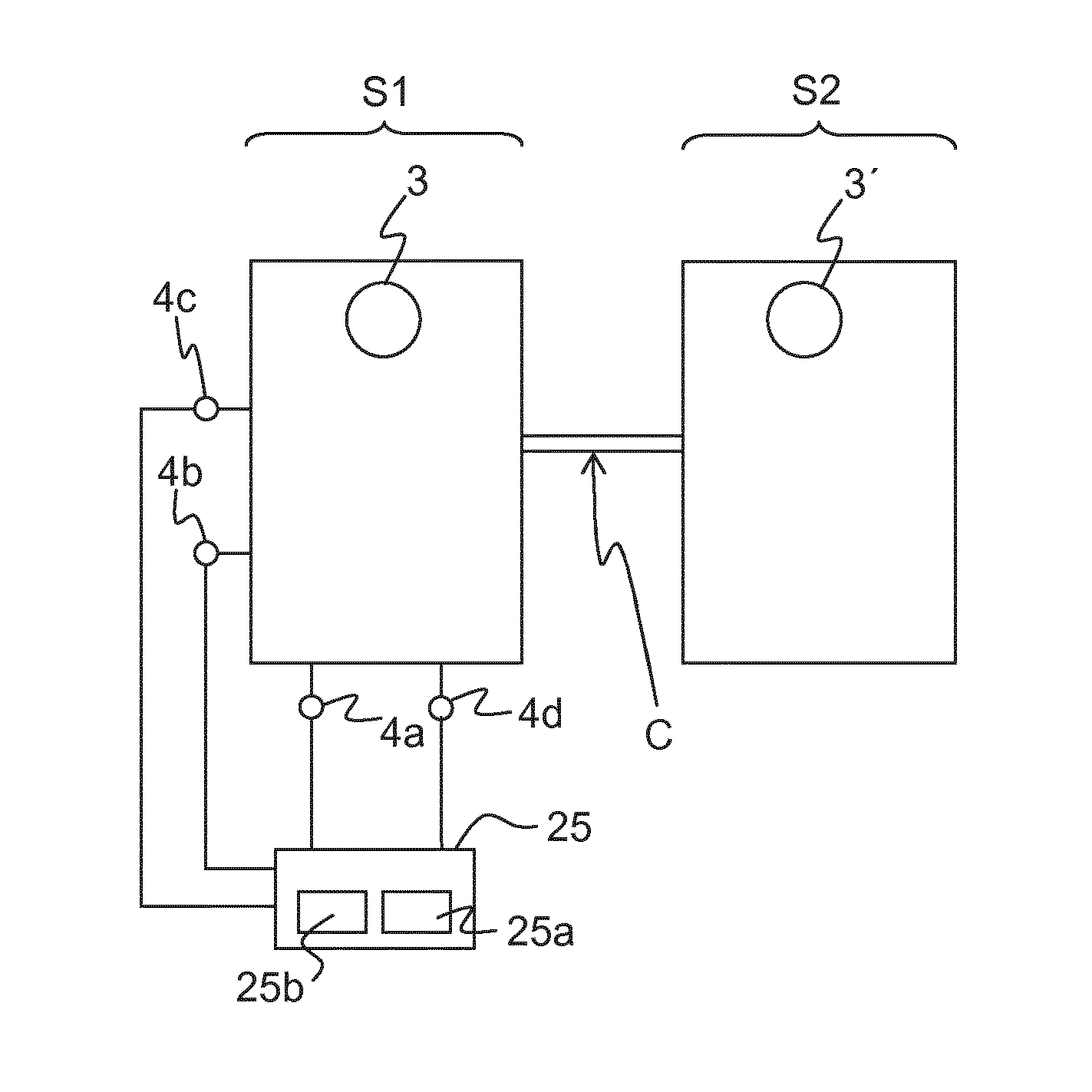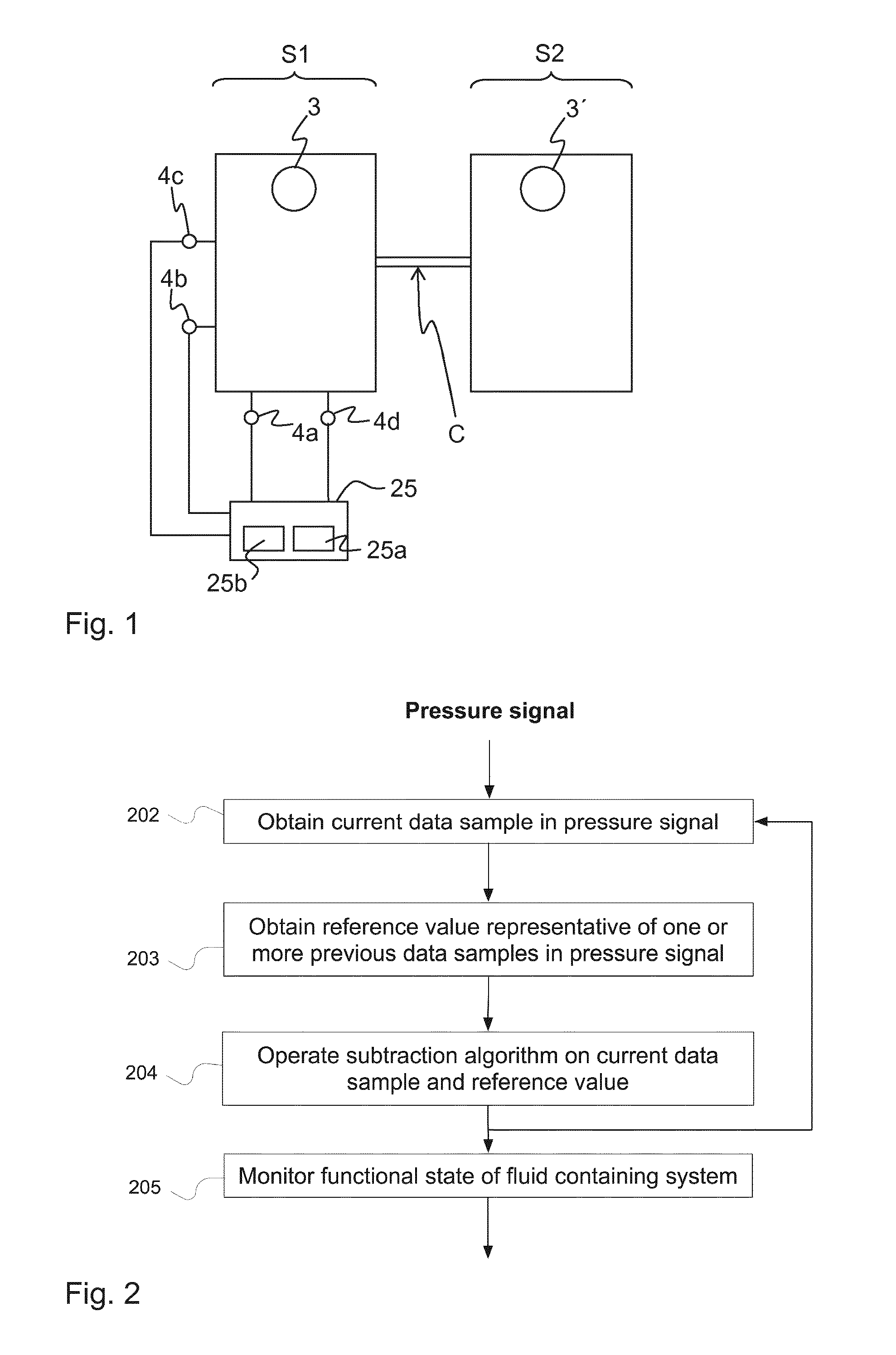Filtering of a time-dependent pressure signal
a filtering and pressure signal technology, applied in the field of processing a time-dependent pressure signal, can solve the problems of generating an average, unable to provide information on the shape of the heart pulse, and unable to provide data on the magnitude or timing of individual heart pulses, etc., to achieve the effect of improving processing or memory capacity and being simple to implemen
- Summary
- Abstract
- Description
- Claims
- Application Information
AI Technical Summary
Benefits of technology
Problems solved by technology
Method used
Image
Examples
example i
Reference Value Based on a Corresponding Cycle-Synchronized Sample of the Immediately Preceding Pulse Cycle
[0072]FIG. 3B illustrates a first example where a reference value is obtained based on a corresponding cycle-synchronized sample of the immediately preceding pulse cycle. FIG. 3B shows a current data sample C1 from a first position in the current pulse cycle and one preceding cycle-synchronized data sample P11 from a first position in the first preceding pulse cycle corresponding to the relative location of the current data sample in the current pulse cycle. In the example with a peristaltic pump, the cycle-synchronized data sample P11 has been obtained at an instance in time corresponding to one full rotation earlier of the rotor, i.e. 360 degrees earlier.
[0073]FIG. 6 is a schematic diagram of a filter structure 31 that implements the process in FIG. 2 to achieve the data processing indicated in FIG. 3B. In FIG. 6, a block Z−Δ is included to implement a step of obtaining, in t...
example ii
Reference Value Based on Corresponding Cycle-Synchronized Samples of Multiple Preceding Pulse Cycles
[0079]FIG. 3D illustrates a second example with corresponding cycle-synchronized samples of multiple preceding pulse cycles used for obtaining the reference value. FIG. 3D shows a first current data sample C1 from a first position in the current pulse cycle and first, second and third preceding cycle-synchronized data samples P11, P21 and P31 from positions in the first, second and third preceding pulse cycles corresponding to the location of the first current data sample in the first current pulse cycle. The reference value is calculated as an aggregation of the first, second and third data samples P11, P21 and P31. A subtraction algorithm is operated on the current data sample, using the reference value, to generate an output sample which is essentially free of a signal component attributable to the first pulse.
[0080]The procedure is repeated for current sample C2 and its cycle-sync...
example iii
Reference Value Based on Prediction of Samples Adjacent to the Current Sample
[0088]FIG. 3H illustrates a third example where the reference value is obtained based on the two preceding data samples P1N and P1N−1 that are adjacent to the current data sample C1 in the pressure signal. The reference value is calculated by extrapolating the two preceding data samples P1N and P1N−1. The filter structure 31 in FIG. 9 may be implemented by setting M=2 and Δ=1 (i.e. a delay of one time step) to achieve the data processing in FIG. 3H. Each preceding data sample is multiplied in the multiplication blocks X with a respective weight factor (W1 to Wm) and added together in the summation blocks Σ to generate an extrapolated or predicted reference value {circumflex over (d)}(n). A subtraction algorithm is operated on a current data sample C1, using the predicted reference value {circumflex over (d)}(n), to generate an output sample e(n) which is essentially free of a signal component attributable t...
PUM
| Property | Measurement | Unit |
|---|---|---|
| frequency | aaaaa | aaaaa |
| frequency | aaaaa | aaaaa |
| pressure | aaaaa | aaaaa |
Abstract
Description
Claims
Application Information
 Login to View More
Login to View More - R&D
- Intellectual Property
- Life Sciences
- Materials
- Tech Scout
- Unparalleled Data Quality
- Higher Quality Content
- 60% Fewer Hallucinations
Browse by: Latest US Patents, China's latest patents, Technical Efficacy Thesaurus, Application Domain, Technology Topic, Popular Technical Reports.
© 2025 PatSnap. All rights reserved.Legal|Privacy policy|Modern Slavery Act Transparency Statement|Sitemap|About US| Contact US: help@patsnap.com



